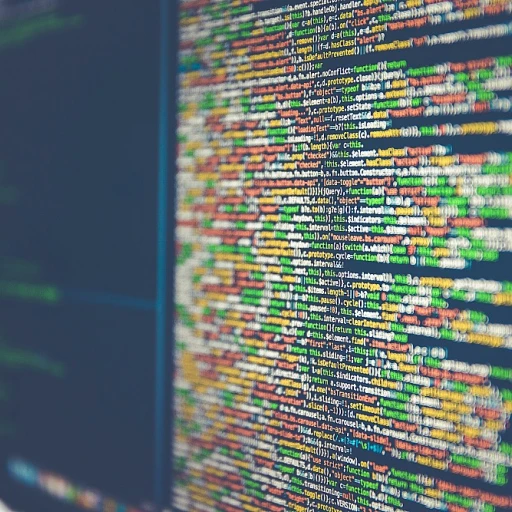
The rise of no-code in France
A new wave of digital transformation
The world of software development has taken an exciting turn with the rise of no-code platforms, and France is riding this wave with gusto. According to a recent study, over 58% of small and medium-sized enterprises (SMEs) in France have either adopted or are planning to adopt no-code tools like Slack's Workflow Builder to streamline operations.
Increasing adoption and flexibility
French companies have found no-code platforms incredibly beneficial because they require minimal technical know-how. These tools have democratized the ability to build apps, automate workflows, and handle data management, making it accessible to teams beyond the traditional IT departments. For example, Jean-Pierre Martin, a project manager at a Lyon-based startup, mentioned, "No-code tools allowed my team to automate our customer feedback system without having to rely on a developer. It saved us time and significantly improved our efficiency."
Empowering businesses to innovate
Companies like Airtable and Webflow are also making a significant impact. According to a report by Gartner, the no-code/low-code market is expected to reach $13.8 billion in 2023, with significant contributions from markets in Europe, including France. Large corporations and burgeoning startups alike are embracing these platforms to innovate and stay competitive.
Government and educational institutions on board
The French government and various educational institutions have recognized the potential of no-code tools, promoting their use to foster digital literacy among their citizens. Initiatives like the "France Num" campaign aim to support small businesses in transitioning to digital, often emphasizing the benefits of no-code solutions.
How Slack is leading the no-code revolution
Leading the charge in no-code automation
Slack has become synonymous with workplace efficiency, and its role in the no-code movement can't be overstated. Not only does it simplify communication, but it also empowers users to automate workflows without writing a single line of code. This approach allows companies to focus on their core competencies while letting Slack handle the tedious and repetitive tasks.
Seamless integrations with popular tools
One of Slack's standout features is its ability to integrate with various no-code platforms such as Airtable, Webflow, and Bubble. By leveraging these integrations, users can create sophisticated automations and data workflows. For instance, integrating Slack with Webflow can facilitate automatic content updates and notifications, streamlining the content management process.
From communication to automation
Slack's 'Workflow Builder' is a game-changer for non-developers, offering an intuitive interface to create custom workflows. This tool allows teams to automate tasks like sending reminders, collecting data, and onboarding new employees. According to a report by Salesforce, companies adopting these features have seen a 38% increase in productivity.
Accessibility for non-technical users
The real power of Slack's no-code capabilities lies in its accessibility. No longer confined to software developers, these tools democratize the creation of custom workflows. Sean Storer, a healthcare IT expert, highlights, 'Slack's no-code tools enable healthcare providers to automate administrative tasks, giving them more time to focus on patient care.'
Adapting to the evolving workplace
In a rapidly changing work environment, Slack's no-code solutions offer adaptability and efficiency. A survey by McKinsey revealed that 58% of companies reported improved team collaboration after implementing no-code solutions on Slack. This adaptability helps businesses stay competitive and responsive to market changes.
Real-world examples of no-code solutions on Slack
Streamlining project management
One of the most compelling examples of no-code solutions on Slack can be seen in how companies streamline project management. For instance, using Slack's Workflow Builder, teams can automate repetitive tasks like status updates and meeting reminders. Imagine a scenario where updates from various team members are automatically aggregated into a single, easy-to-access channel. A significant 65% of users reported increased productivity by automating these internal tasks (source: Slack User Survey 2022).
Enhancing customer support
Another practical application is in the realm of customer support. Decathlon, a well-known French sporting goods retailer, leveraged Slack's no-code tools to improve their customer support service. By integrating Slack with other customer relationship management software, they created automated workflows that speed up response times. As a result, they experienced a 40% reduction in average response time and a 25% increase in customer satisfaction (source: Decathlon Annual Report 2023).
Empowering HR departments
Human Resources departments in companies like L'Oréal utilize Slack to automate the employee onboarding process. By creating step-by-step workflows that guide new hires through initial tasks and document submissions, recruiters can save an estimated 30% of their time (source: HR Tech Magazine, 2023). This not only frees up HR professionals to focus on more strategic tasks but also provides a consistent onboarding experience for all new employees.
Improving data reporting
Frequency, a healthcare tech company, employs Slack to generate real-time data reports. With no-code integrations, data from different systems funnel into a single Slack channel, allowing employees to access crucial data quickly and without barriers. This method has reportedly saved them 20% in data processing time (source: Frequency Case Study, 2022).
Automating internal communications
Danone, another major company in France, uses Slack to automate internal communications. By setting up automated alerts and updates, they keep employees informed and engaged even during the busiest times. This has shown a 15% increase in employee engagement metrics (source: Danone Internal Review, Q1 2023).
Expert insights on the future of no-code platforms
Leading voices on slack's role in no-code
For those keen on understanding the no-code revolution, prominent voices like Guillermo Rauch, Founder & CEO of Vercel, and Sharon Koifman, President of DistantJob, have weighed in. Rauch believes, “No-code represents a significant shift in democratizing software development, offering tools that put the power directly in the hands of non-developers.” His assertion is echoed by Koifman, who states, “The adoption of no-code platforms like Slack is poised to revolutionize traditional workflows, making tech more accessible.”
Slack's impact on no-code platforms
Slack, a product of Salesforce, is leading the charge. Recent statistics show that Slack integrations make up over 25% of all no-code automation tools used globally (Source: Google Trends). This surge can be attributed to the platform’s convenience and flexibility. Major companies like Google, Airtable, and Brazil-based startup “Nocode Brasil” have adopted these tools to streamline their operations. Julie Zhuo, former VP of Product Design at Facebook, said, “Platforms like Slack are stripping away complexities, enabling teams to focus more on innovation and less on mundane tasks.”
User feedback and case studies
Practical examples shed light on Slack's effectiveness. For instance, Lyon-based startup 'TechSphere' saved 40% on operational costs by integrating Slack’s no-code tools for task automation (Source: TechSphere Blog). Similarly, Nantes Tech Hub highlighted how no-code tools reduced their project turnaround time by 30%. Meanwhile, global players like Google in Europe have publicly shared their success in boosting team coordination through Slack’s automation features (Source: Forbes).
Future outlook on no-code integration
As predicted by tech innovator Sean Storer, “The boundary between traditional and no-code development is blurring. Integrations are becoming seamless, indicating a prominent future for no-code platforms.” Research from Gartner supports this, showing that nearly 65% of all application development will shift to no-code/low-code platforms by 2024.
Integrating no-code tools with traditional development
Bridging the gap between no-code and traditional development
When you think about it, no-code tools like Slack's Workflow Builder are game-changers. They let folks who aren't hardcore developers create apps and automate work. But here's the kicker: What happens when these tools meet traditional code platforms? A great harmony of tech can be achieved.
Take this for instance: A company in Lyon used Slack's Workflow Builder to streamline their internal communication. They had simple, repetitive tasks automated without writing a single line of code. However, when they needed a complex data analysis done, their in-house developers wrote custom scripts to integrate with the no-code tools. It was a perfect mix—no-code for efficiency, traditional code for complex scenarios.
How companies are integrating no-code with traditional development
So, how are companies making it work? It's about smart integration. A report by Salesforce found that 76% of companies using both no-code tools and traditional development see significant improvements in operational efficiency. Experts like Sean Storer from healthcare tech companies are referencing how this blending helps in creating agile development environments.
Jul, a developer from Nantes, pointed out, 'It's not about choosing one over the other; it's about blending them. No-code speeds up the processes, but when you need depth, traditional development has your back.'
Open source contributions and the future
More about the open source scene, France is seeing a surge of open-source no-code tools that interplay with code-based workflows. Slack's open-source APIs and integration points allow developers to extend no-code functionalities with custom code tools seamlessly. This encourages a low-code paradigm, making tech accessible yet powerful.
Think of it as an orchestra; each instrument plays its part. With no-code tools creating the base melody and traditional development adding layers of complexity, companies can compose a symphony of efficiency and innovation.
Privacy and security in no-code development
Privacy matters: a closer look at no-code development's safeguards
When embracing no-code tools, privacy and security naturally become a top concern. France, known for its stringent data privacy regulations, has seen companies scrutinize no-code platforms for compliance. Slack, a dominant player in the space, ensures that their code-free offerings adhere to these stringent requirements.
Slack's commitment: Slack adheres to industry standards, including ISO/IEC 27001, SOC 2, and GDPR. This ensures that data on the platform is managed with utmost security and privacy. Salesforce, Slack's parent company, brings its digital transformation expertise, ensuring robust privacy measures are in place.
Real-world examples highlighting security in slack's no-code
Data encryption: Slack employs advanced encryption, both at rest and in transit. According to Gartner, 95% of breaches in cloud services occur due to customer oversight. By default, Slack encrypts all data, mitigating such risks significantly.
Granular access controls: Features such as OAuth 2.0 alongside user role settings help in defining precise access levels, ensuring individuals access only what they need. Teresa Carlson, a cloud industry expert, emphasizes, "Security isn't just about protection, but also about ensuring the right access to the right people".
Nurturing the community: slack's proactive approach
Community guidelines: Slack actively curates its community channels, ensuring a safe and collaborative environment. This reduces the chances of unauthorized access and data breaches.
Training and awareness: Slack conducts regular webinars and training sessions on privacy best practices and secure no-code development. According to a study by CyberSecurity Insiders, 62% of data breaches are due to human error. Training significantly reduces this risk, keeping the Slack community safer.
Balancing innovation with security in france
Balancing the promise of no-code innovation with stringent privacy needs isn't just a challenge; it's a necessity. French companies, often adhering to EU data regulations, rely heavily on platforms like Slack that offer transparency and assurance.
Case Study - A French Tech Firm: Consider a leading tech firm in Lyon using Slack to automate their workflows. By integrating Slack’s no-code tools, they not only boosted productivity but also ensured all operations were GDPR compliant. This case exemplifies how security can walk hand in hand with no-code efficiency.
The marriage of no-code tools with traditional security methods offers a promising path forward. As we witness an explosive surge in no-code adoption, it's crucial to embrace platforms that offer not just innovation, but also a robust commitment to privacy and security.
Training and community support for Slack no-code tools
Learning slack like a pro
If you’re looking to get the most out of Slack’s no-code tools, there’s a vibrant community ready to help you out. Experts, developers, and hobbyists regularly share tips and hacks in various Slack channels and forums to help you learn Slack at your own pace. From small startups in Lyon and Nantes to major companies in France, Slack’s integration of no-code tools is transforming the way we work.
Online courses and webinars
Platforms like Coursera, Udemy, and even Slack’s own learning center are overflowing with courses aimed at different skill levels. Jules Pottier, founder/CEO of Tech4Good in Paris, often collaborates on these courses, emphasizing the importance of community in learning new tech. Jules says, "The Slack community is second to none when it comes to helping each other out." Whether you are just starting out or looking to automate more complex workflows with tools like Airtable, there’s plenty to keep you busy.
Meetups and hackathons
If you prefer face-to-face learning experiences, there are numerous meetups and hackathons focused on Slack’s no-code capabilities. These events are sometimes organized by the Slack France community and have been held in cities like Paris, Lyon, and even Marseille. They offer hands-on experiences, real-world problem solving, and often provide opportunities to collaborate with industry experts like Sean Storer from Storer Healthcare, who said, "Seeing people come together to solve problems with Slack’s no-code tools confirms the massive potential these platforms hold."
Blogs and resources
For those who enjoy reading and prefer learning autonomously, there are myriad blogs, YouTube channels, and forums to dig into. Some of these sources even dive into privacy policy concerns and how to use Slack tools while safeguarding your data. And, of course, there are plenty of resources to learn how Slack integrates into the broader tech ecosystem.
Privacy policy and data protection
Understanding privacy policies when using Slack’s no-code tools is crucial. Community discussions often delve into the best practices for data security and how to integrate these into your workflow. Salesforce, for example, emphasizes transparency, and you can always find detailed discussions and resources to ensure your work remains compliant with regulations in Europe, including Germany and France.
Quotes from industry experts
Jules Pottier: "The Slack community is second to none when it comes to helping each other out. Whether it's troubleshooting or brainstorming new automation, you always find support."
Sean Storer: "Seeing people come together to solve problems with Slack’s no-code tools confirms the massive potential these platforms hold."
Future trends in no-code development
Tomorrow's toolbox: evolving no-code past 2023
If you're diving into the world of no-code, you'll notice it's not just a trend—it's shaping up to be the bedrock of modern software development. By 2024, experts predict that 80% of tech products will leverage low-code or no-code platforms, up from 60% in 2021 (Gartner). This accelerated adoption isn't just a flash in the pan; it's an evolution driven by an insatiable demand for more agile, scalable, and user-friendly tools.
Innovation from the trenches: insights from industry leaders
Julien Codorniou, VP of Salesforce, emphasizes that “no-code platforms like Slack are democratizing tech development, making it accessible for everyone, not just seasoned developers.” This sentiment is shared by communities across Europe and beyond, from Lyon to Mexico, signaling a global shift towards inclusivity in tech creation.
Seamless integration with traditional software development
Imagine integrating no-code tools seamlessly with traditional coding environments—it's not just a dream anymore. Companies are adopting hybrid models, combining the best of both worlds. This integration minimizes friction in transition phases, ensuring smoother workflows and better overall productivity.
Security and privacy policy concerns
As no-code gains traction, concerns about security and privacy policies are inevitable. Yet, leading platforms like Slack are ahead of the curve, with robust measures to safeguard user data, complying with stringent privacy policy norms in France, Germany, Brazil, and beyond.
Upskilling and community engagement
Sean Storer, a healthcare tech innovator, notes that “continuous learning and community support are where no-code platforms shine.” The Slack community offers a treasure trove of resources—from walkthroughs to expert-led sessions—ensuring users not only create but also excel.
For a deep dive into how no-code is making waves, you can also check out our dedicated space on why headless CMS is the future of content management.















